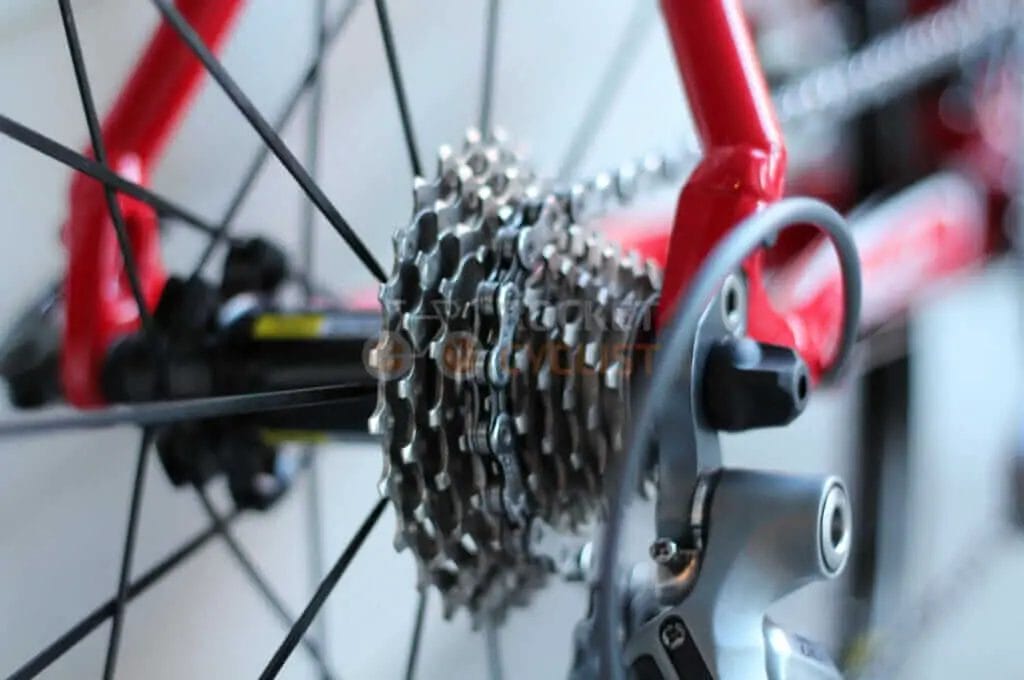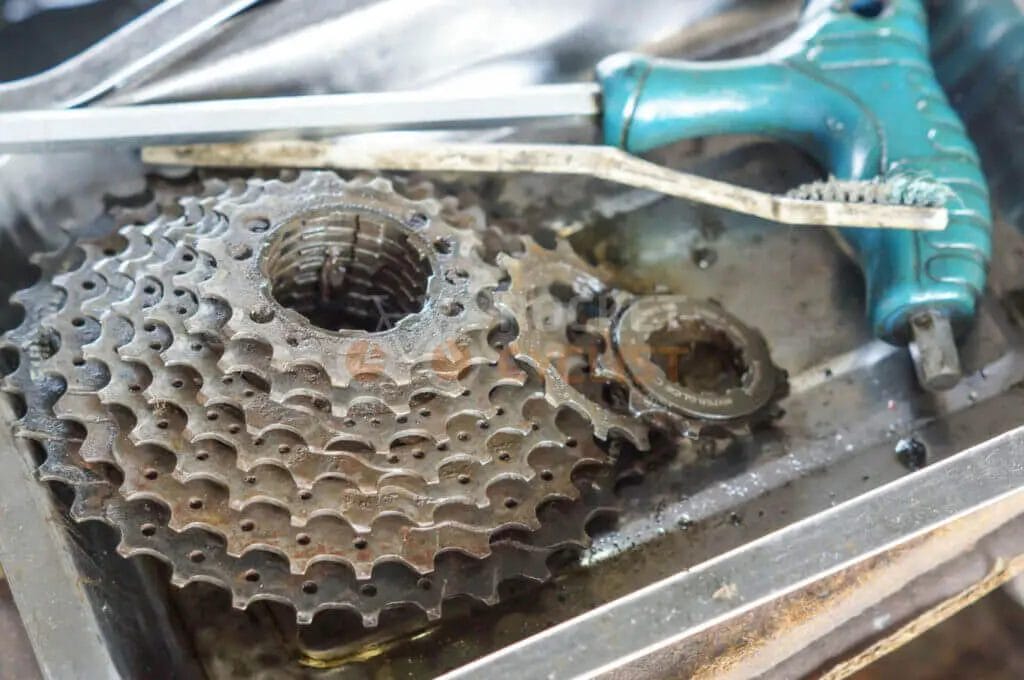Last Updated on September 28, 2024 by Vinson Lozano

Understanding the differences between freewheel and cassette is crucial for anyone delving into the world of bicycle gear systems. Both drivetrain components play a significant role in the performance and functionality of your bike, but they operate quite differently. This article aims to outline the key characteristics of these two systems, explaining their respective advantages and disadvantages, and helping you determine which is best for your cycling needs.
Key Takeaways
- Freewheels and cassettes are distinct types of bicycle drivetrain systems.
- Freewheels are older technology that screw onto a threaded hub, while cassettes slide onto a freehub.
- Sprocket interchangeability is a key factor in maintenance and upgrades.
- Cassettes typically offer better gear options and ease of replacement.
- Understanding these differences can enhance your cycling experience and bike performance.
Understanding Freewheels and Cassettes
What is a Freewheel?
A freewheel is a type of rear hub system that has built-in ratcheting mechanisms, allowing the rider to coast without pedaling. It consists of a threaded assembly of multiple sprockets that can be unscrewed from the hub for replacement or upgrade. The ratchet mechanism within the freewheel engages when pedaling forward and disengages when coasting, making it a vital component of many older bikes and entry-level models.
What is a Cassette?
On the other hand, a cassette is a series of sprockets that slide onto a freehub. This system provides a more modern solution, offering better gear options and improved performance. Because of the way they mount, cassettes are generally easier to replace or upgrade. Unlike freewheels, which require a special tool and some elbow grease to remove, cassettes can be quicker to swap with a cassette tool.
Key Differences Between Freewheel and Cassette

Sprocket Interchangeability
One of the pivotal differences between freewheels and cassettes is sprocket interchangeability. Freewheels combine all gears into one unit, which means if one sprocket wears out, you often have to replace the entire assembly. In contrast, cassettes allow for individual sprocket replacement, which is more cost-effective and user-friendly. Cyclists who frequently ride in varied conditions appreciate the flexibility that cassettes offer when it comes to swapping gears.
Threaded Hub versus Freehub
The design features emphasize another major difference: the mounting system. Freewheels are designed to screw onto a threaded hub, while cassettes slide effortlessly onto a freehub. This distinction is crucial for selecting new components, as the type of rear hub you have dictates the compatible gearing options. When updating or maintaining your bike, knowing whether your drivetrain uses a freewheel or cassette can save you from headaches down the line.
Gearing Options
When it comes to gearing options, cassettes generally outshine freewheels. Modern cassettes allow for a broader range of gearing combinations, making it easier to find the exact gearing for your cycling needs. Whether you’re climbing steep hills or cruising on flat roads, a well-designed cassette can enhance your riding experience. Freewheels, while functional, often limit these options due to their older technology.
Practical Advice for Choosing the Right System
- Evaluate Your Riding Style: Before investing in a new drivetrain component, consider your riding preferences. Are you a casual rider, or do you often push your limits on challenging terrains? For most cycling enthusiasts, a cassette offers better gearing options and overall performance.
- Maintenance and Upkeep: Regular maintenance is essential for all bike components. Be mindful of how easy it is to replace gears in your system. Many riders prefer cassettes for their ease of replacement; understanding your comfort level with bike maintenance is crucial when selecting between freewheels and cassettes.
- Upgrade Considerations: If you’re looking to enhance your bike’s performance, opting for a cassette may prove beneficial due to its superior technology. Check whether your current hub can accommodate a cassette to avoid unnecessary upgrades to other parts of the bike.
- Test Ride Different Systems: Experience is the best teacher. If possible, test ride bicycles that feature both systems. This hands-on approach can provide insights into which setup suits you best in terms of comfort and performance.
Real-life Experiences

Many cyclists have fond memories tied to their gear systems. For instance, a mountain biker named Mike shared his journey from a freewheel setup to a more advanced cassette system. “I used to struggle on steep climbs with my old bike,” he recalled. “Once I switched to a cassette, the difference was night and day! I felt in control during my rides, and the flexibility in gearing options made tackling hills a breeze.”
Similarly, casual riders appreciate the simplicity of freewheels, especially when it comes to maintenance. Jane, a weekend cyclist, said, “My freewheel has served me well over the years. I like knowing that I can just swap it out if needed without fuss.”
Conclusion
In summary, understanding the differences between freewheels and cassettes can significantly impact your cycling experience. Freewheels provide a more straightforward, albeit limited, option for many casual cyclists, while cassettes offer a modern, flexible, and performance-enhanced solution that can meet the needs of more serious riders. Choosing the right system is essential, and it’s a decision that can enhance your biking experience for years to come.
Feel free to share your experiences with freewheels or cassettes in the comments below. Have questions? I’m here to help!
FAQs
- What is the main difference between a freewheel and a cassette?
- A freewheel screws onto a threaded hub, whereas a cassette slides onto a freehub.
- Can I replace individual sprockets on a freewheel?
- No, freewheels must be replaced as a whole unit; individual sprockets cannot be replaced.
- Which system is better for climbing hills?
- Cassettes typically offer better gear options for climbing due to their greater range and flexibility.
- Is it possible to convert a freewheel bike to a cassette system?
- Yes, but it usually requires replacing the rear hub to accommodate the freehub needed for a cassette.
- How do I maintain my freewheel or cassette?
- Regular cleaning and lubrication are crucial for both systems. Replace worn sprockets as needed.
- Do cassettes last longer than freewheels?
- Yes, cassettes are often more durable and allow for individual sprocket replacement, extending the lifespan of your drivetrain.
- What tools do I need to change a cassette?
- You will need a cassette lockring tool and a chain whip to remove and install cassettes.
- Can I use a cassette on an older bike designed for a freewheel?
- Usually not. Cassettes require a specific freehub, so ensure your bike is compatible before making any changes.
- How do I know if I have a freewheel or cassette setup?
- Check the rear hub; if you see a threaded body where the gears mount, you have a freewheel. If it has splines with a lockring, you likely have a cassette.
- What are the cost differences between freewheels and cassettes?
- Generally, freewheels are cheaper, but the price can vary depending on the quality and brand of the components. Cassettes may have a higher upfront cost, but they often provide better performance and longevity.


